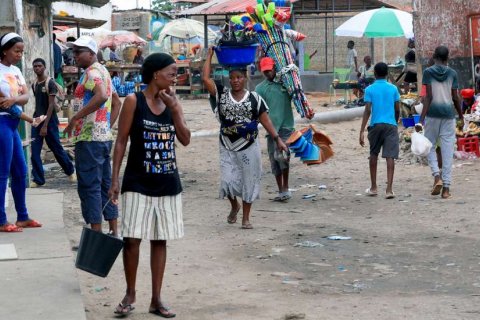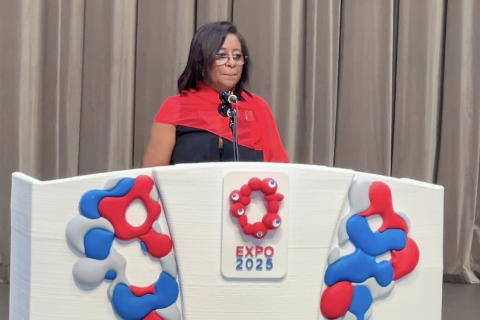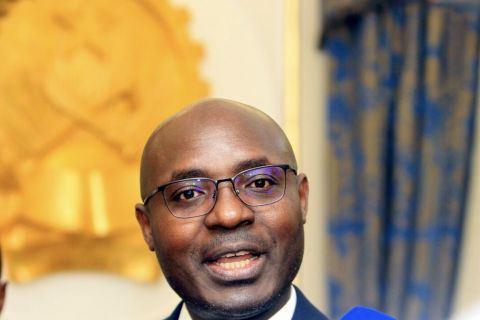The world is undergoing a process of improvement in terms of teaching and learning. New technological tools are implemented every day with the aim of improving the transmission of knowledge. According to Almeida and Silva (2019), the incorporation of technological tools into the school environment has been essential to make the teaching-learning process more dynamic and interactive. Tools such as applications, simulators, and online teaching platforms allow students to take a more active role in the construction of knowledge.
Over time, the way people learn has expanded. It is important to take advantage of these new forms of learning that students identify with. Therefore, it is necessary to adapt the teaching model to the demands and preferences of the current generation, which is increasingly familiar with digital resources (Pereira, Lima, 2020).
After the colonial period, Angola experienced a peak in the expansion of public schools. According to data collected by the INE (National Institute of Statistics) in 2022, there are currently around 10,012 schools, most of which were built between 1999 and 2009. According to Novo Jornal (2024), more than half of these schools have never been maintained and are in a state of structural decay.
Although the nation has taken considerable steps to provide education to the population, the education system is slowly advancing in the implementation of new technologies in the teaching-learning process.
The use of new technologies in public schools in Luanda is still quite precarious. Equipment such as image projectors, integrated school management systems, teaching applications, quizzes to exercise students, online classes, online meetings, artificial intelligence to suggest teaching improvements in the classroom, and video classes are examples of technologies that are not yet widely used.
The widespread implementation of these technologies adds significantly to teaching. Each one can serve as a favorable resource for both students and teachers. Teachers can use projector presentations to convey their message more effectively to students who learn better visually than in other ways. In addition, resources such as online classes can strengthen the connection between members, making teachers more accessible and allowing students to have their questions answered remotely whenever possible. In addition to these benefits, the use of technology makes it easier for students who are on leave (for health reasons, pregnancy, etc.) to participate in classes, allowing them to access classes in a synchronous or asynchronous format, without having to miss out on the content during the period of absence from school. The use of new technologies in the teaching-learning process does not only bring benefits. With proper application, the academic system will tend to gain more than it loses. So why is the implementation of new technologies in Luanda's schools occurring at such a slow pace? What is missing for Luanda's schools to routinely use new technologies in the teaching process? These and other questions related to this subject may probably arise, and the answers to them are not so simple.
Firstly, Luanda has a great disproportion between the number of inhabitants of active school age and the number of schools in the province. According to Gazeta do Povo (2019), there are classrooms in Luanda with around 120 students. Furthermore, according to Novo Jornal (2024), by 2022, more than 61% of the schools throughout the country that were built in the last 49 years have not yet undergone rehabilitation and are in a deplorable state.
Secondly, most of the new technologies that have been revolutionizing the teaching model require internet to be used in full or in part. Since most public schools do not have broadband internet available for students and teachers to use these new technologies, the implementation of these means becomes unfeasible. The internet plans of telephone operators, which favor social networks more than educational websites, also contribute negatively to the fact that certain programs are not adopted by schools. Finally, the lack of incentives on the part of school management regarding the implementation of new technologies in the teaching and learning process is noteworthy. Furthermore, many teachers face difficulties in applying technological methods due to their lack of knowledge of these technologies. In this case, what can be done to overcome the adversities that the educational system in Luanda faces?
Initially, it is necessary to preserve the country's existing educational facilities through rehabilitation to maintain them in good condition. Next, the number of schools must be increased in order to significantly reduce overcrowding in classrooms. In this sense, an environment conducive to the implementation of new technological methods will be established.
According to the study carried out by Silva and Oliveira (2021), for schools to adopt more technological teaching methods, it is essential to meet some basic conditions. Schools must have adequate infrastructure, with spacious classrooms, technological equipment in good condition and access to quality internet. In addition, it is essential that classes are not excessively large, so that teachers can give individualized attention to students and use technological resources effectively.
With the infrastructure organized, it is necessary to create training programs for students, so that they learn how to use and handle the various digital tools that can be used in classrooms. According to research conducted by Carvalho and Santos (2022), for the use of technological methods to be effective in schools, it is essential that the management encourages teachers to use the available resources. Therefore, it is essential that school management promotes regular training, provides technical support and encourages the adoption of increasingly innovative tools that can enrich and facilitate the teaching-learning process.
Thus, the use of new technologies in teaching in public schools brings with it a range of benefits to the current teaching model. However, it will only be possible to fully implement such technologies if the schools have their structures adequately prepared. This will increase the proximity between students and teachers, so that the teaching-learning process in public schools in Luanda will be increasingly expanded.
References
ANTONIO, Fred Andre. The Role of the Teacher and the Teaching of Mathematics in Angola. Available at: https://www.verangola.net/va/pt/012024/opiniao/38364 Accessed on: July 10, 2024.
CARVALHO, L. F.; SANTOS, M. J. Educational technologies: challenges and opportunities for teaching practice. Education and Technology Journal, v. 18, n. 2, p. 85-102, 2022.
GAZETA DO POVO. Latest news from Brazil and the World. Available at: https://www.gazetadopovo.com.br Accessed on: July 26, 2019.
NOVO JORNAL. News from Angola and the World, Opinion and Multimedia. Available at: https://novojornal.co.ao Accessed on: July 19, 2022. 2024.
SILVA, J. A.; OLIVEIRA, M. S. Challenges and opportunities in the use of educational technologies in public schools. Brazilian Journal of Education, v. 26, p. 45-67, 2021.
Previous
The opinion of... José Pereira Chito








